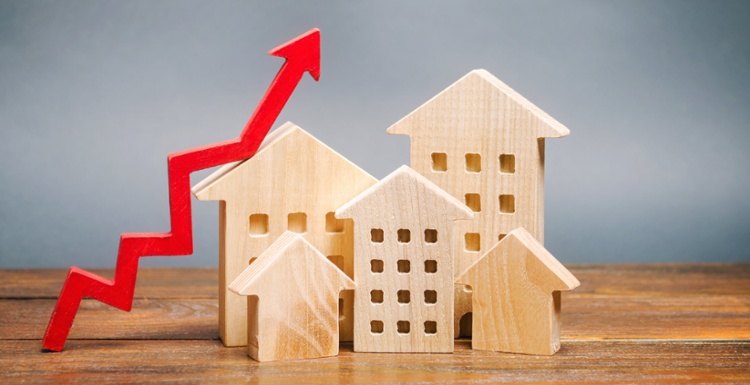Income-producing property is real estate you invest in to make money from tenant rent payments, appreciation in market price, or adding value with additional revenue streams.
In this article we’ll take an in-depth look at the best ways to invest in real estate, the biggest benefits of owning income property, and where to find a good, turnkey, income-producing property.
Ways to Invest in Income-Producing Real Estate
Investing in real estate is often compared to a box of chocolates, and for good reason. There are so many choices, it can be difficult to decide which to take a bite of first.
To help you simplify your selection, here are some of the most popular ways to invest in income-producing real estate:
Single-Family Rentals
Pros:
- Most common type of residential property in the U.S.
- Easy to find in any real estate market
- Financing is inexpensive and offered by a variety of lenders
Cons:
- Multiple exit strategies by selling to another investor, the tenant, or an owner-occupant
- Not every house makes a good rental property since tenant demand can vary
Small Multifamily Property
Pros:
- Duplexes, triplexes, and fourplexes are an easy way to increase cash flow in your portfolio
- Focus on buying units or “doors” instead of single properties
- Property management and maintenance can be easier when multiple tenants are next to each other
Cons:
- Not all lenders will make loans on multifamily rental property
- Exit strategy limited to selling to another investor
Turnkey Properties
Pros:
- Completely updated and already occupied by a tenant
- Cash flow begins the day escrow closes
- Good for long-distance real estate investing in smaller secondary markets
- Normally very easy to finance especially when rental income is being generated
Cons:
- Typically purchased at retail price, so unlikely to get a price discount
Short-Term Rentals
Pros:
- Seasonal and vacation rentals can generate higher rents per square foot
- Rental periods normally range from one night to several weeks
Cons:
- Operating costs are higher due to greater tenant turnover, extended vacancy periods, and landlord payment of utilities
- Property management is more intensive because short-term rental are similar to running a hospitality business
- Greater risk of property damage and theft if guests in short-term rentals are not thoroughly screened
Fix-and-Flip Real Estate
Pros:
- Potential to make a large amount of money in a short period of time
- Multiple exit strategies by selling to an owner-occupant, an investor, or as a turnkey rental property
- Best for well-capitalized investors who work full-time in a local market
Cons:
- High risk investment strategy that hinges on correctly timing the market
- Too many fix-and-flippers in a single market can make below-market deals extremely difficult to find
Wholesaling
Pros:
- Form of real estate investing without actually taking possession of property
- Wholesalers find below-market deals, accurately estimate needed repairs, and assign the contract to another investor
- Money earned by collecting a wholesale fee while tying up very little capital
- Buying from a trusted wholesaler is a good way for buy-and-hold investors to earn instant equity
Cons:
- High-risk strategy that requires a deep market knowledge and excellent market timing
REITs
Pros:
- Real estate investment trusts (REITs) can be private or publicly traded on the major stock exchanges
- Easy way to diversify by asset class or geography
- Specialty REITs include casinos, agricultural land, and cell phone tower sites
Cons:
- REIT investors lose many of the tax benefits direct ownership offers
- Owning shares of a REIT is more similar to owning a stock than investing in real property that you actually own
Crowdfunding
Pros
- Crowdfunding occurs when a large number of people contribute smaller amounts of money to invest in real estate
- Good way to indirectly own a small piece of a prestigious asset such a shopping center, office building, or large apartment development project
- Investors in crowdfunds earn income from quarterly distributions and a share of the profit when the property is sold
Cons:
- Potential gains (or losses) from a crowdfund investment hinge on the experience of the crowdfund sponsor who finds and manages each project
- Can be much riskier than other real estate investments

7 Biggest Benefits of Investing in Income-Producing Property
Beginning real estate investors are often pleasantly surprised to learn just how friendly current laws are to people who own income-producing property.
Here’s a shortlist of some of the biggest benefits of investing in income-producing property:
1. You control the property, not Wall StreetAccording to the Investment Company Institute (ICI), an association that represents mutual funds and ETFs, 401(k) plans hold about $6.2 trillion in assets. Unfortunately, many of those “assets” consist of stocks and bonds managed by people on Wall Street who may be more concerned with their bank account balance than yours.
On the other hand, when you invest in real estate, you’re in complete control of your future financial wealth. You can decide how and where to invest, what types of income-producing property to own, and build a local real estate team whose goals are directly aligned with yours.
2. Income-producing real estate cash flowsThe S&P 500 Dividend Yield is currently less than 2% (as of May 2020), which is also about the average rate of inflation. That means that if you own dividend-paying stocks, you’re breaking even at best.
Income-producing property can easily generate net cash flows (another way of thinking about dividends or returns) of 6% or more each year. Most investors can’t use leverage when buying stocks and pay cash instead.
So, let’s go to the Roofstock Investment Property Marketplace and do an apples-to-apples comparison of the cash flow a rental property could provide if you pay all cash:
- Single-family house in Memphis, TN = $105,469 initial cash investment
- Annual gross rent from current tenant = $975 per month / $11,700 per year
- Cash flow (after operating expenses) = $588 per month / $6,697 per year
- Annual return (comparable to a stock dividend) = 6.4%
Real estate and income-producing property also historically appreciates over the long term. According to the Federal Reserve Bank of St. Louis, the median sales price of houses sold in the U.S. has increased by 49% since Q2 2010.
If you had purchased our house in Memphis back in the spring of 2010, you would have a gain from appreciation of $51,680 plus cumulative cash flow from rental income of $66,970 for a total return over 10 years of $118,650:
- Gain from long-term appreciation: $105,469 initial investment + 49% increase in value = $51,680
- Gain from cash flow rental income: $6,697 x 10 years = $66,970
- Total return over 10 years: $51,680 appreciation + $66,970 cash flow rental income = $118,650
Of course, those gains are without factoring in any annual increase in rent to the tenant or the need for any capital repairs.
But even with this simple example, you’ve probably noticed that in just 10 years this income-producing property has generated more money than we paid for it – and the house still belongs to you free and clear.
4. Use leverage to boost returnsUnlike buying stocks, as a real estate investor you can also use leverage (also known as OPM or other people’s money) to invest in income-producing property and boost your returns.
A common metric used to measure real estate performance is cash-on-cash return. Cash-on-cash compares the amount of cash returned from the property to the amount of cash invested:
- Cash-on-cash return = Cash flow / Cash invested
The annual cash-on-cash return for the single-family house in Memphis is:
- $6,697 annual cash flow / $105,469 cash invested = 6.4%
By using leverage and taking out a mortgage on the house, you can increase your cash-on-cash return. If you make a conservative down payment of 25% (using an LTV or loan-to-value of 75%) your annual cash flow decreases because of the mortgage payment, but your return increases:
- $2,250 annual cash flow / $28,620 initial cash investment = 7.9%
This also means that in a little more than 10 years the annual cash flow from the income-producing property would return 100% of the initial cash investment.
5. Apply technology to invest in real estate long distanceOne thing that stock markets and income-producing real estate do have in common is that it’s possible to invest online from any place and at any time. Several years ago, that wasn’t the case. A real estate investor could literally spend weeks searching for a good rental property in different markets across the U.S.
6. Investor-friendly tax benefitsTax law in the U.S. is also extremely friendly to real estate investors who own income-producing property. Tax deductions for rental property include:
- Maintenance and repairs
- Utilities paid by the landlord
- Professional and legal fees
- Money paid to independent contractors and employees
- Advertising costs
- Commissions and referral fees
- Personal property deductions
- Interest payments including mortgage and credit card purchases
- Property tax
- Insurance premiums
- Travel expenses
- Home office deduction
- Depreciation expense deduction
- 1031 exchange used to defer payment of capital gains tax
After you’ve been investing in income-producing property for a while, you’ll also find it’s a good way to generate additional investment capital. For example, after 10 years the house in Memphis nearly $120,000 in funds that you could use to buy more income-producing property. In fact, by using a conservative LTV of 75% you might have enough money for making down payments on two, three, or even four more income properties.
There are also plenty of other people today that have money to invest, but don’t have the time or knowledge of the real estate market like you do. As a real estate investor with proven success, you can form small partnerships or joint ventures to raise money, then share the profits with your investors.

How to Evaluate Income Real Estate
There are several key factors to follow when evaluating any type of income real estate:
- Analyze the different ways the property can generate income, such as dependable cash flow, the potential for a high level of appreciation, or value add revenue streams
- Conduct a thorough financial analysis by measuring common investment real estate metrics such as cap rate, cash-on-cash return, ROI, IRR, and gross yield
- Consider ‘soft costs’ such as travel time and self-management vs. professional property management
- Always be learning by attending seminars, reading real estate investor blogs, joining local investor groups, and following economic trends in each real estate market you invest in









